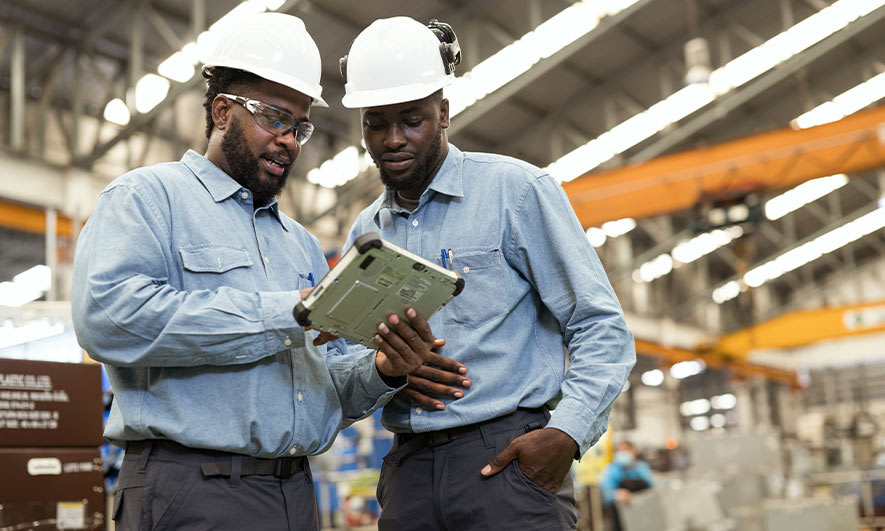Turbulent U.S. trade policy represents one more headwind for construction companies after years of stubborn inflation, supply chain resets and severe labor shortages.
Construction and economic specialists at The Hartford see tariff policies having far-reaching cost impacts beyond the price of overseas building materials. Historically, global tariffs have raised prices on domestically made materials as well.
To help cut through the uncertainty, The Hartford recommends four strategies to consider as trade and geopolitical action plays out:
1. Study How Tariff Policy Is Evolving
Tariff awareness requires equal focus on trade history and current events. For example, it’s important to know that between World War II and 2018, tariff-setting power moved significantly from Congress to the White House. However, during that period, presidents largely supported free trade policies that didn’t often require the use of tariffs.
What changed? In 2001, China was allowed to join the World Trade Organization (WTO), enabling it to trade freely across the globe.1 Michael Wolf, principal U.S. economist at The Hartford’s Global Insights Center, notes that this event "supercharged” trade headwinds, which were already hurting aggressive U.S. Chinese economic policies, and would later make China the world’s biggest manufacturing country.
“In 2011, the U.S. trade deficit nearly doubled from $35 billion in 2001 to $62 billion, while manufacturing employment cratered from 16.4 million to 11.7 million over the same one-decade period,” Wolf explains. “By 2018, these impacts fueled a populist backlash to free trade that accelerated U.S. tariff policy that year and again in 2025.”
As of mid-2025, tariff discussions were continuing with many countries, but Wolf observes that construction leaders have been feeling the pain since February due to higher tariffs on steel and aluminum-based products that will likely resonate domestically.
“In 2018, a 25% tariff on imported steel increased the cost of domestically produced steel by up to 20%,” Wolf says. “Construction companies are already seeing similar impacts from February 2025 tariffs placed on construction materials using steel and aluminum.”2 Tariffs increased for those categories alone from 25% to 50% in June.
“Specific tariff rates will change over time, so understanding the environment and how it evolves will be critical for construction firms and their procurement strategies,” Wolf adds.
2. Review Supply Chains, Backlogs and Contract Language
“So far, construction companies have been able to stave off many of these cost pressures by stockpiling materials,” says Scott Schultz, chief underwriting officer for construction at The Hartford. However, he explains that stockpiling is a short-term solution for calendar year 2025 as other potential difficulties loom.
“Within a contractor’s backlog, the environment right now should feel relatively stable,” says Schultz. “But now is also the time for contractors to be very transparent with project owners that costs could increase, and not only because of tariffs, but because of lack of skilled labor and other economic factors.”
Impacts related to evolving federal immigration policy have already affected construction planning as an estimated one in five construction workers lack permanent legal status in the United States.3, 4 Schultz recommends construction companies begin coordinating with risk, legal, human resources and financial advisors right now to get a full picture of competitive risk in 2026 and beyond.
Insurers, agents and brokers can also provide valuable perspective on how contract terms may be changing. Specifically, owner or contractor escalation clauses deserve fresh attention given ongoing trade and economic events.
“It’s likely many of the events we’re watching now might have a significant impact on construction firms in the next six to eight months,” Schultz says.
3. Get Closer to Growing Industries
Construction firms are generally more successful when they establish a niche or expertise in certain project areas for which they are known. However, when global or economic events become uncertain, it’s worthwhile to examine industries that are funding projects to preserve their own competitive advantage.
As of mid-2025, those industries included:5
- Technology: North America’s four largest data center markets (Northern Virginia, Chicago, Atlanta and Phoenix) increased 43% year-over-year during 2025’s first quarter.6 This inventory growth outran increases in Europe, Latin America and Asia-Pacific.
- Healthcare: Hospitals, clinics and other medical facilities are trying to extend patient reach despite budgetary and staff challenges, so they’re putting brick-and-mortar operations closer to patients.7
- Infrastructure: Projects related to transportation and other public needs should proceed based on continuing funding, but construction leaders should evaluate how the administration plans to budget for transportation upgrades, federal facilities, schools and other projects.8
- Manufacturing: Construction leaders should keep an eye on auto, semiconductors and battery industries to see how their construction needs may change.9 “The tariff policy won’t cause all imports to be produced domestically, but it may impact some decisions on where to locate production,” says Wolf.
4. Invest in Resiliency
Current and future trade and geopolitical events will require companies to pivot even faster to manage rising costs, navigate market turbulence and seize new opportunities.
Here are key technology, labor and risk management strategies construction leaders may want to consider now:
- Evaluate internet of things (IoT) technologies to prevent health, transportation and operating risks.
- Recalibrate hiring and retention processes to develop and retain talent.
- Improve data capabilities inside the business and at every worksite to boost profitability on every job.
“Certain investments will not make sense for every business,” says Schultz. “Today, labor and environmental risks are likely to increase. New solutions are emerging daily to help tackle that by controlling construction costs and improving productivity.”
Learn more about specialized insurance solutions for the construction industry at The Hartford.
1 “U.S. Tariffs Are Among the Lowest in the World—And in The Nation’s History,” Pew Research Center, viewed July 2, 2025.
2 “Construction Costs Dip, But Tariffs Hike Some Materials’ Prices,” Construction Dive, viewed July 2, 2025.
3 “Construction Industry Braces for One-Two Punch: Tariffs and Deportations,” Wall Street Journal, viewed July 2, 2025.
4 “A Fifth of Construction Workers Lack Permanent Legal Status. Can the Next President Change That?” Construction Dive, viewed July 2, 2025.
5 “2025 U.S. Construction Outlook,” JLL, viewed July 2, 2025.
6 “Global Data Center Trends 2025,” CBRE, viewed July 2, 2025.
7 “Healthcare Construction Grows Despite Financial Pressures,” Modern Healthcare, viewed July 2, 2025.
8 “U.S. Infrastructure Improves, But Cuts May Imperil Progress, Report Says,” New York Times, viewed July 2, 2025.
9 “Major Factory Construction Projects to Watch in 2025,” Manufacturing Dive, viewed July 2, 2025.
Links from this site to an external site, unaffiliated with The Hartford, may be provided for users' convenience only. The Hartford does not control or review these sites nor does the provision of any link imply an endorsement or association of such non-Hartford sites. The Hartford is not responsible for and makes no representation or warranty regarding the contents, completeness or accuracy or security of any materials on such sites. If you decide to access such non-Hartford sites, you do so at your own risk.
The Hartford Insurance Group, Inc., (NYSE: HIG) operates through its subsidiaries, including the underwriting company Hartford Fire insurance Company, under the brand name, The Hartford,® and is headquartered in Hartford, CT. For additional details, please read The Hartford’s legal notice at https://www.thehartford.com.





